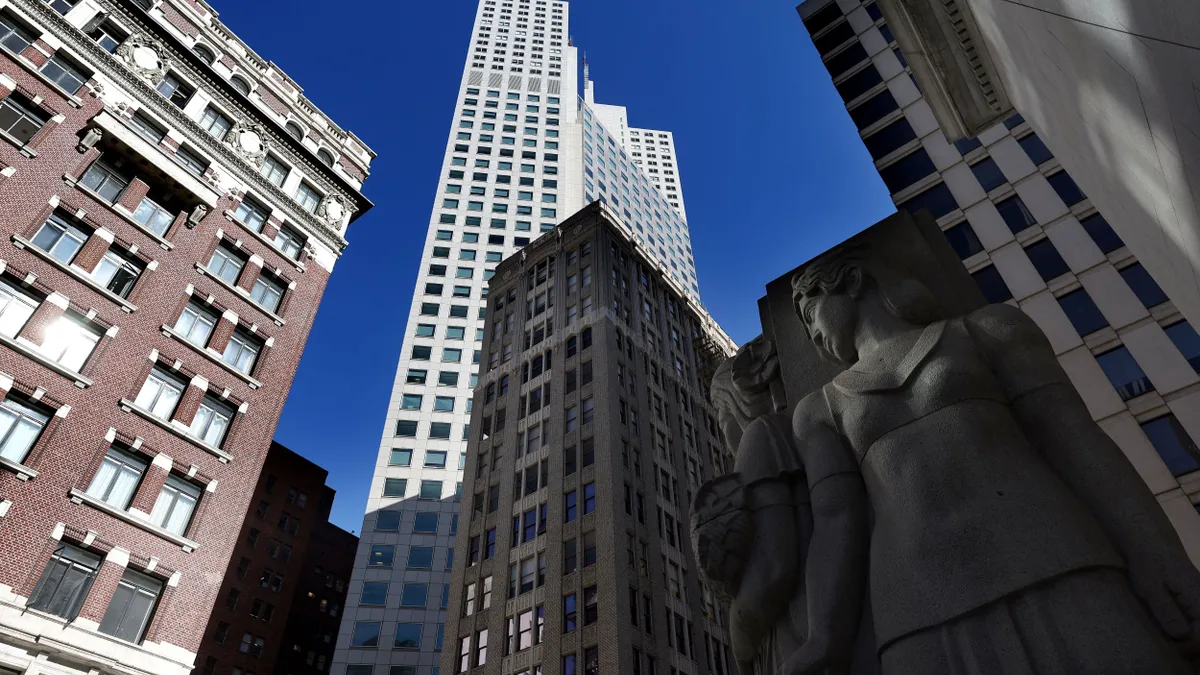Gov Gavin Newsom on Sept. 27 vetoed a bill designed to speed up the process of converting commercial buildings into residential and mixed-use developments in California, raising questions about the viability of adaptive reuse projects in the state.
California’s AB 3068, introduced by Assembly member Matt Haney, D-San Francisco, proposed streamlining the approval process for conversions of buildings less than 50 years old or those that meet historic preservation standards by allowing such projects to bypass traditional zoning laws and removing the need for conditional use permits.
Further, the bill would have authorized local governments to create incentive programs and concessions that could reduce the financial burden of such conversion projects on developers — a critical consideration for building operators grappling with rising operational costs.
When asked why the legislation was vetoed, the governor’s office and representatives for Haney did not respond, but local leaders in the state say the decision likely stems from concerns that the bill included too many conditions and that some of its provisions could complicate, rather than simplify, conversion projects.
Bruce Monighan, urban designer manager for Sacramento, California — who reviewed the legislation earlier this year — said that while the bill’s intent to recycle older office buildings was laudable, meeting current building codes is a significant challenge when converting older office buildings, especially those that don’t qualify as historic and thus can use the historic building code.
For facilities managers and developers, the challenge with converting an office building also involves navigating changes in occupancy — a process that requires compliance with current codes, Monighan noted.
“We tend to think of high-rise office buildings, but lower-story buildings are much less expensive to convert,” Monighan said. “Second, commercial buildings have higher requirements and codes for life safety than residential buildings, but the code requires that you meet current building standards, even if commercial standards are higher than residential standards. We think there may be options in providing for appropriate life safety in meeting the intent of all current building codes when you convert commercial to residential. The cost of converting a commercial building and bringing it up to current code becomes prohibitive.”
Against the backdrop of a housing crisis and high office vacancy rates, the situation has become particularly pressing for building owners and operators overseeing commercial properties in urban hubs across Los Angeles and San Francisco.
A RAND report from 2022 found 2,300 potentially underutilized commercial properties in Los Angeles that can produce between 72,000 and 113,000 housing units, while a Cushman & Wakefield report notes that the office vacancy rate in San Francisco “recorded a new high” at 34.5% in the second quarter of 2024. Meanwhile, an analysis published by the city’s controller’s office, citing research from Moody’s, identified 13% of office buildings in San Francisco as candidates viable for conversion.
For developers looking to pursue conversions, the prevailing wage requirement proposed in the bill can be another obstacle. The bill would have required that contractors pay workers prevailing wages and adhere to apprenticeship and workforce standards to ensure safe working conditions and fair wages for those involved in adaptive reuse projects. While these provisions align with California’s broader labor laws, they can increase the financial burden on developers and building operators, according to Alex Stettinski, CEO of San Jose Downtown Association. “While the intention is good, not every project developer can pay prevailing wages,” Stettinski said. “It could make it cost prohibitive to some.”
Further complicating matters is a provision in the bill that allows cities to issue stop-work orders for code violations or perceived code violations. This clause creates “considerable uncertainty,” which could lead to project delays and increased costs that would make adaptive reuse projects financially unviable, Stettinski said.
“I think what [the governor] has the biggest issue with is how it becomes almost impractical for many developers [due to these] conditions. It becomes so cumbersome and complicated for developers that it loses its original intention to simplify adaptive reuse projects and instead makes it harder,” he added.
California AB 529, approved last year, aims to facilitate the adaptive reuse of existing buildings, particularly older, often underused buildings like office spaces, into residential or mixed-use developments. Monighan noted that AB 529 has the potential to address some of the permitting and code compliance issues raised in AB 3068. The findings from an AB 529 task force, of which Monighan is a member, will be reported to the legislature by Dec. 31, 2025, Monighan said.
AB 529 “gives us an opportunity to bring a voice to the legislature and identify a series of issues from condominium conversion liability to code requirements that add extra layers of cost" to conversion projects in California, Monighan said.
Interested in more facilities management news? Sign up for Facilities Dive’s newsletter today.





















